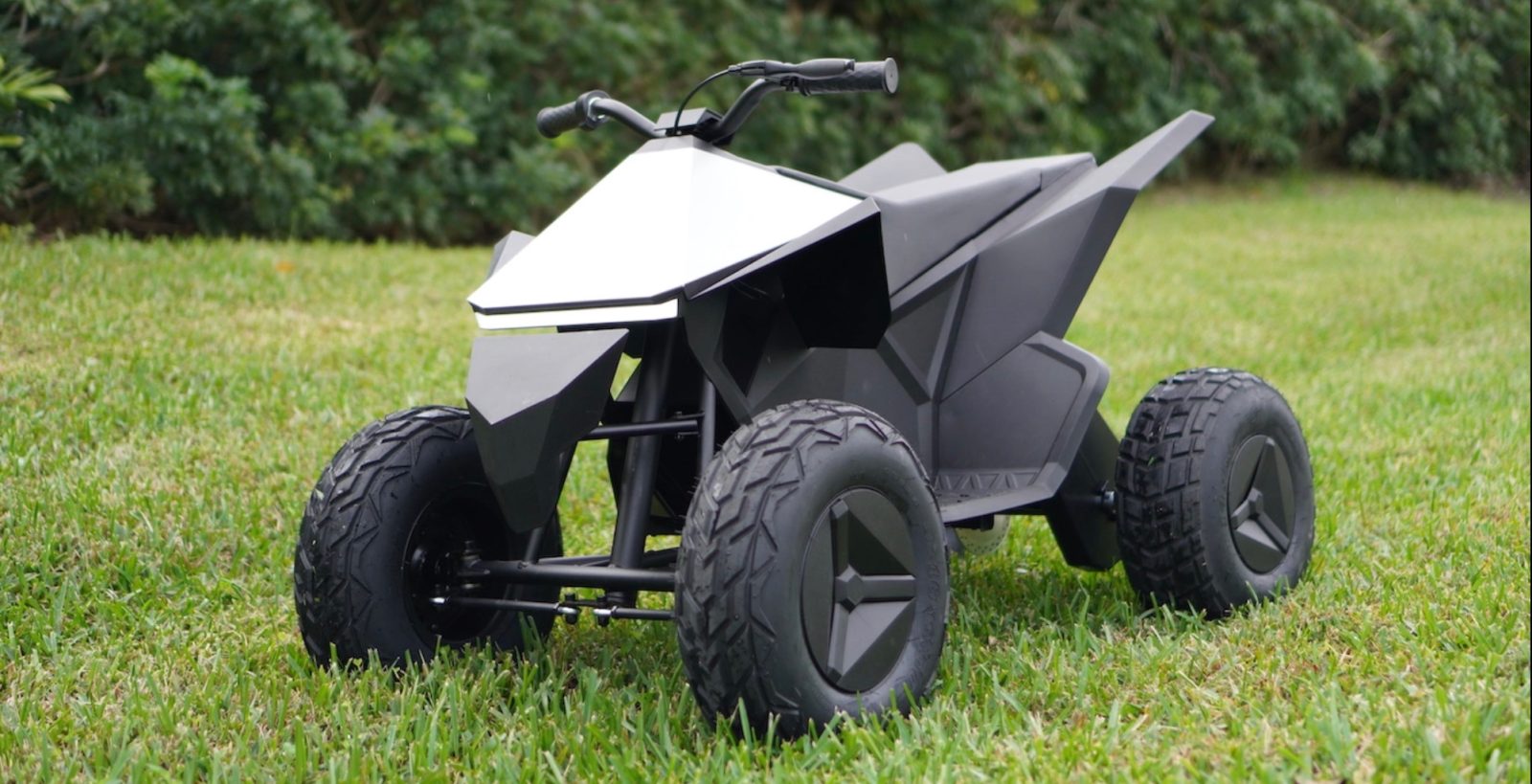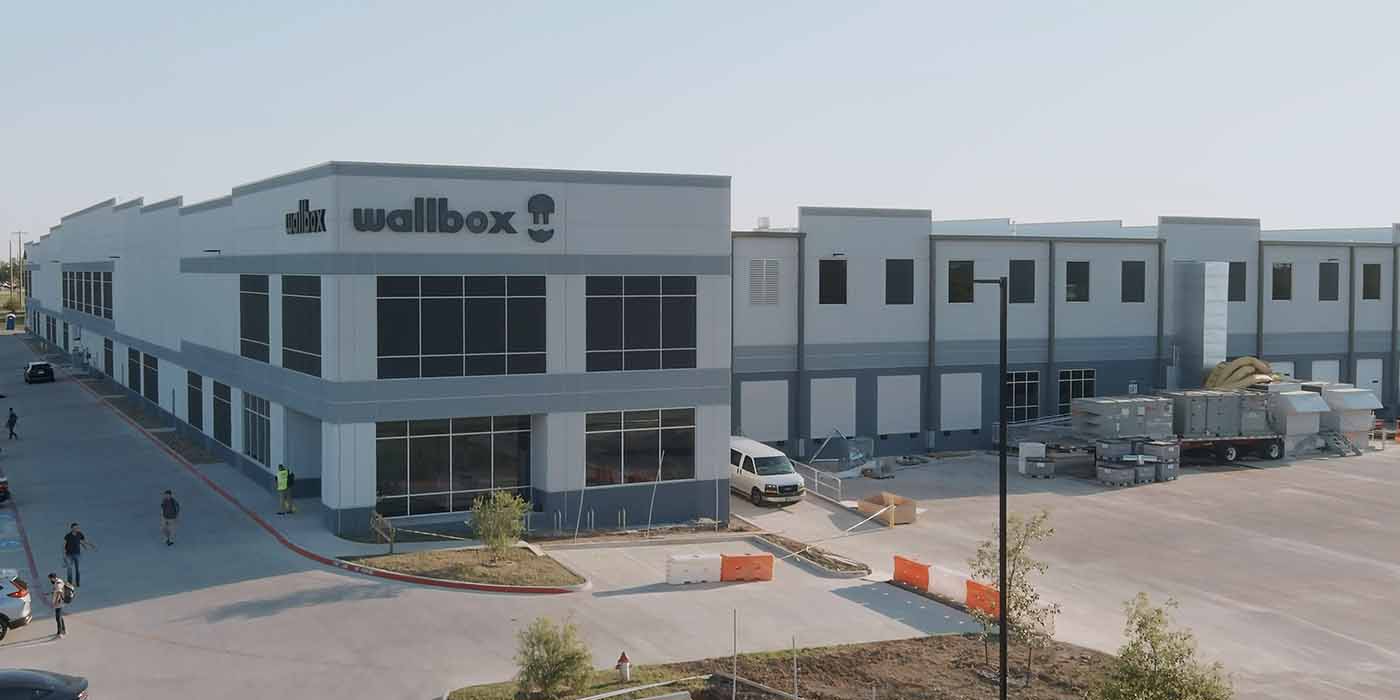Honda’s new GM Ultium-based Prologue will be eligible for the $7,500 federal tax credit because it’s US-made.
Source: Electric Vehicle News
Electric Vehicle News
Tesla Cyberquad for Kids gets recalled after a 36-year-old got a bruise

Tesla Cyberquad for Kids, a small toy ATV, is getting recalled after a 36-year-old, who probably had no business riding the toy, got a bruise.
The post Tesla Cyberquad for Kids gets recalled after a 36-year-old got a bruise appeared first on Electrek.
Source: Charge Forward
Chinese E-Scooter Maker NIU Releases BQi-C3 Pro Electric Bicycle
This stylish e-bike can go the distance with its dual-batteries boasting an 84-mile range.
Source: Electric Vehicle News
The Current Renault Zoe Is Also The Last Zoe
Renault won’t give the Zoe a direct replacement and it will instead try to get people to buy their Clio and Captur hybrids.
Source: Electric Vehicle News
Wallbox Opens The Doors to Its new Manufacturing Facility In Texas
The new facility promises to add more than 250 jobs to Arlington by 2025 and approximately 700 by 2030.
Source: Electric Vehicle News
We toured Wallbox’s new Texas facility and demoed its 400 kW DCFC that can deliver 100 miles in 5 minutes

EV charging equipment specialist Wallbox opened its new, state-of-the-art manufacturing facility in Arlington, Texas, today where we were fortunate enough to be one of the first to take a tour. This new 130,000-square-foot factory is Wallbox’s first manufacturing footprint in North America, and will produce all of its US EV chargers. Wallbox also demonstrated one of the chargers that will be built in Texas – the new Hypernova 400 kW DC fast charger, which can add up to 100 miles of range in just five minutes.
The post We toured Wallbox’s new Texas facility and demoed its 400 kW DCFC that can deliver 100 miles in 5 minutes appeared first on Electrek.
Source: Charge Forward
Volvo Showcases EX90’s Screens And User Interface
The EX90’s interior is all about minimizing distractions in order to help you focus.
Source: Electric Vehicle News
New DC-DC converter features GaN Systems power transistor
A new DC-DC converter from Renesas Electronics includes a GaN-on-silicon power transistor made by GaN Systems.
The GS61008P is a 100 V enhancement-mode power transistor that provides a 46% reduction in system size, according to GaN Systems.
Renesas’s new DC-DC bidirectional converter is designed for 48 V mild hybrid vehicles and electric motorcycles, and includes an automatic phase drop function, an ISL78226 PWM controller and a half-bridge driver.
“A combination of GaN with the automatic phase drop function achieves highly efficient power conversion even at low loads, exceeding 94% power efficiency over a wide load range of 400 W to 3 kW,” says GaN Systems. “The half-bridge driver ISL78420/444 provides an easy and cost-effective method of driving GaN transistors.” GaN Systems says the converter enables “a 46% reduction of the PCB area by leveraging the excellent switching capabilities of GaN Systems’s transistors—enabling a high-efficiency power converter with a high switching frequency of 500 kHz. This allows the use of very small 1.3 µH inductors, which leads to a significant decrease in size and weight.”
Source: GaN Systems
Source: Electric Vehicles Magazine
Enel X Way and Sunrun partner to offer smart home charging stations
EVs and solar panels are like beer and peanuts—consuming one creates an appetite for the other.
Sunrun, a large (over 660,000 installations to date) US home solar energy provider, has recently announced partnerships with several companies in the EV space, including Ford, GM, and now charger manufacturer Enel X Way, a subsidiary of the Enel Group.
Enel X Way will supply smart Level 2 charging stations for Sunrun’s recently-launched charger offering. The new co-branded home EV chargers are designed to work seamlessly with Sunrun’s home solar solutions, using automated off-peak charging to deliver cost savings to EV owners.
The co-branded chargers are available today in select markets, including California, New Jersey and Vermont, and are expected to be available nationwide by the beginning of 2023. They will be sold as an optional add-on for bundling with a Sunrun home solar-plus-battery system.
“With one-third of Enel X Way EV charger owners using solar to power their homes, there’s no denying the strong correlation between solar adopters and EV owners,” said Chris Baker, Head of Enel X Way North America. “This partnership marks a pivotal convergence between two adjacent industries.”
“Home solar and EVs are the perfect match,” said Mary Powell, CEO of Sunrun. “EV owners want to charge their vehicles with a more cost-effective, clean and reliable energy source. By combining Enel X Way’s EV charging expertise and Sunrun’s ability to right-size home solar systems, we’re helping prepare customers for a carbon-free energy future.”
Source: Enel Group
Source: Electric Vehicles Magazine
EPA announces first round of grants from Clean School Bus Program—389 school districts in all 50 states
The Clean School Bus Program, part of President Biden’s Bipartisan Infrastructure Law, makes $5 billion in rebates available over five years for school districts to purchase electric or low-emission school buses.
In May, the EPA announced the availability of $500 million for the first installment, but because of the overwhelming demand from school districts across the country (and perhaps, the urgency of getting the money out before a new regime on Capitol Hill can kill or cripple the program), the agency increased that amount to $965 million. The application period closed in August, and now the agency has selected (through a lottery system) 389 applications totaling $913 million to support the purchase of 2,463 buses.
Some 95% of these will be electric buses (others have LNG or LPG powertrains), and 99% of the school districts that were selected are in “priority areas,” serving low-income, rural and/or Tribal students. EPA will distribute awards to school districts in all 50 states and Washington DC, along with several Tribes and US territories (see the full list here). More applications are under review, and the agency plans to select more in the coming weeks, to bring the full amount of funding in this round to $965 million.
Recipients can now proceed with purchasing new buses and eligible infrastructure, after which they must submit Payment Request Forms with purchase orders documenting their investments. The EPA is partnering with the departments of Energy and Transportation to provide school districts with technical assistance to ensure effective implementation.
The administration plans to make another billion for clean school buses available in fiscal year 2023, so districts that didn’t get selected in 2022 can try again.
“As many as 25 million children rely on the bus to get to school each day,” said EPA Administrator Michael S. Regan. “Thanks to the Biden-Harris Administration, we are making an unprecedented investment in our children’s health, especially those in communities overburdened by air pollution. This is just the beginning of our work to build a healthier future, reduce climate pollution, and ensure the clean, breathable air that all our children deserve.”
Source: Electric Vehicles Magazine




